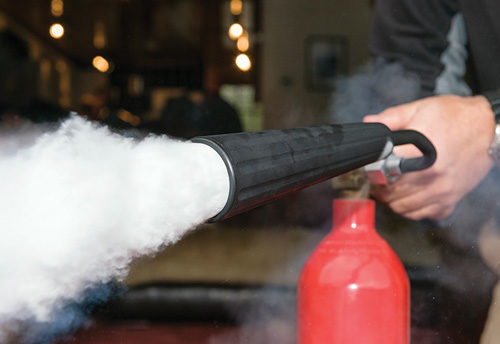Selecting the correct fire extinguisher

The National Fire Protection Association notes that portable fire extinguishers can “save lives and property by putting out a small fire or containing it until the fire department arrives, but portable extinguishers have limitations.”
The three most commonly used fire extinguishers are air-pressurized water, carbon dioxide and multi-purpose/dry chemical. According to OSHA:
Air-pressurized water extinguishers are designed to be used only on Class A fires (wood, paper, cloth, rubber and certain plastics). Never use an APW extinguisher on flammable liquid fires, as it may make the situation worse, or electrical fires, as it may cause electrocution.
Carbon dioxide extinguishers put out fires by displacing oxygen. Be aware that pieces of dry ice will shoot from the device. Carbon dioxide extinguishers are meant for use only on Class B fires (oils, gasoline, some paints, lacquers, grease, solvents and other flammable liquids) and Class C fires (electrical fires, including fires in wires, fuse boxes and energized electrical equipment).
Multi-purpose/dry chemical extinguishers coat the fuel element with a thin layer of fire-retardant powder, OSHA notes. Although generally rated for Class B and C fires, they may be marked as multi-purpose for use in Class A, B and C fires. All fire extinguishers will be marked with labeling that identifies what class of fire it can be used on.
To use a fire extinguisher, NFPA recommends remembering to “PASS”:
- Pull the pin and hold the extinguisher with the nozzle pointed away from you, then release the locking mechanism.
- Aim low – point at the base of the fire.
- Squeeze the lever slowly.
- Sweep the nozzle in a side-to-side motion.
Post a comment to this article
Safety+Health welcomes comments that promote respectful dialogue. Please stay on topic. Comments that contain personal attacks, profanity or abusive language – or those aggressively promoting products or services – will be removed. We reserve the right to determine which comments violate our comment policy. (Anonymous comments are welcome; merely skip the “name” field in the comment box. An email address is required but will not be included with your comment.)

